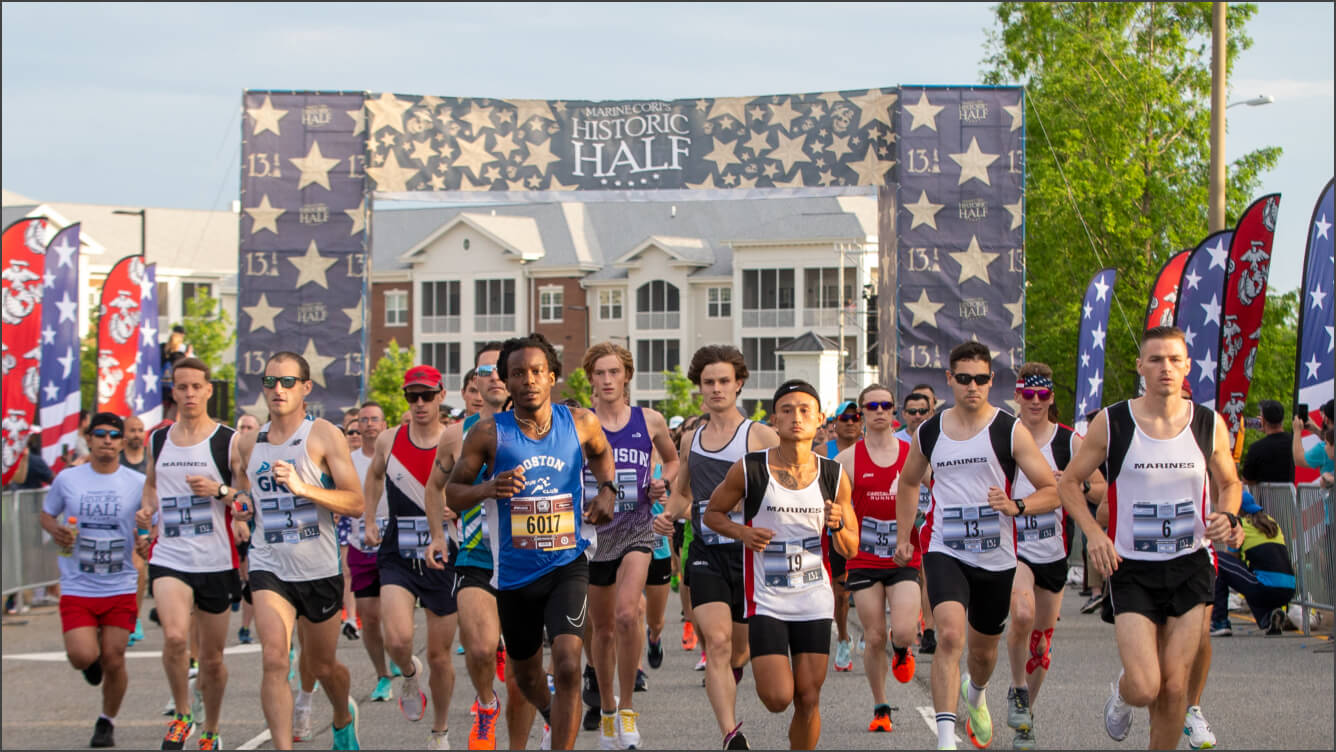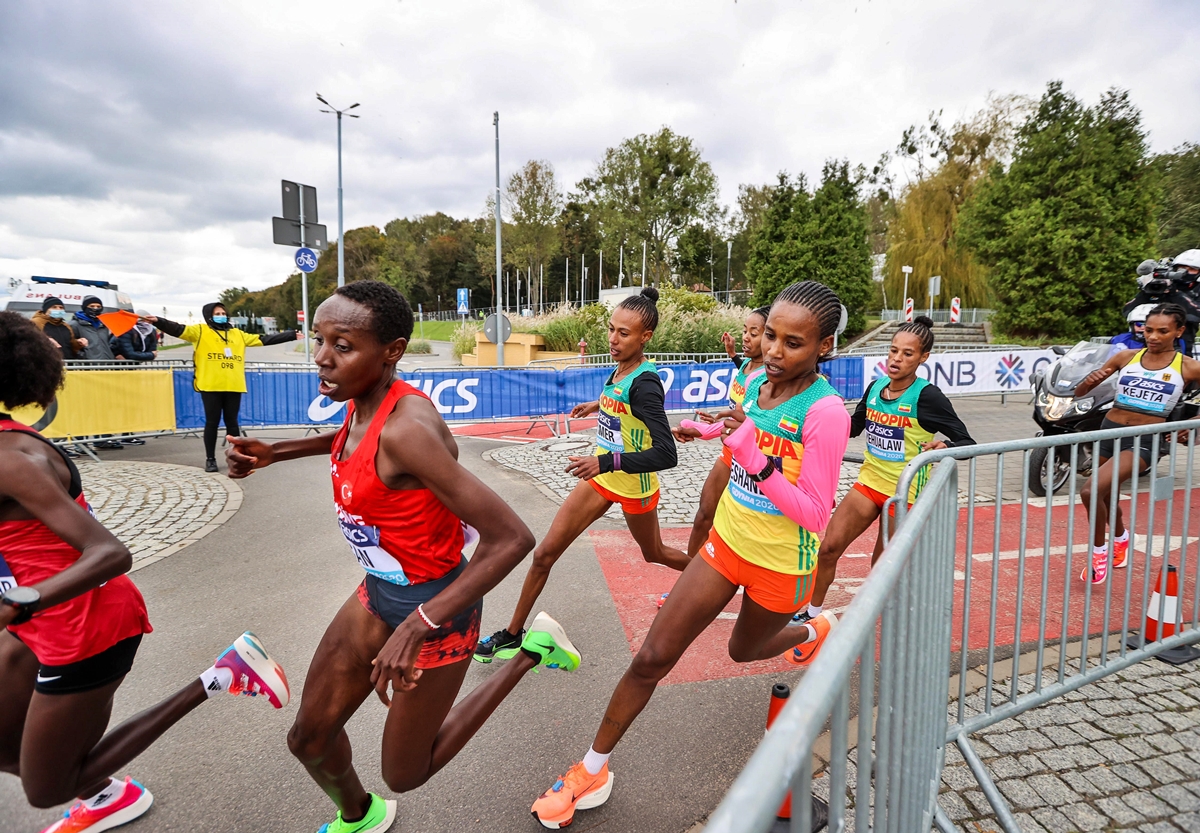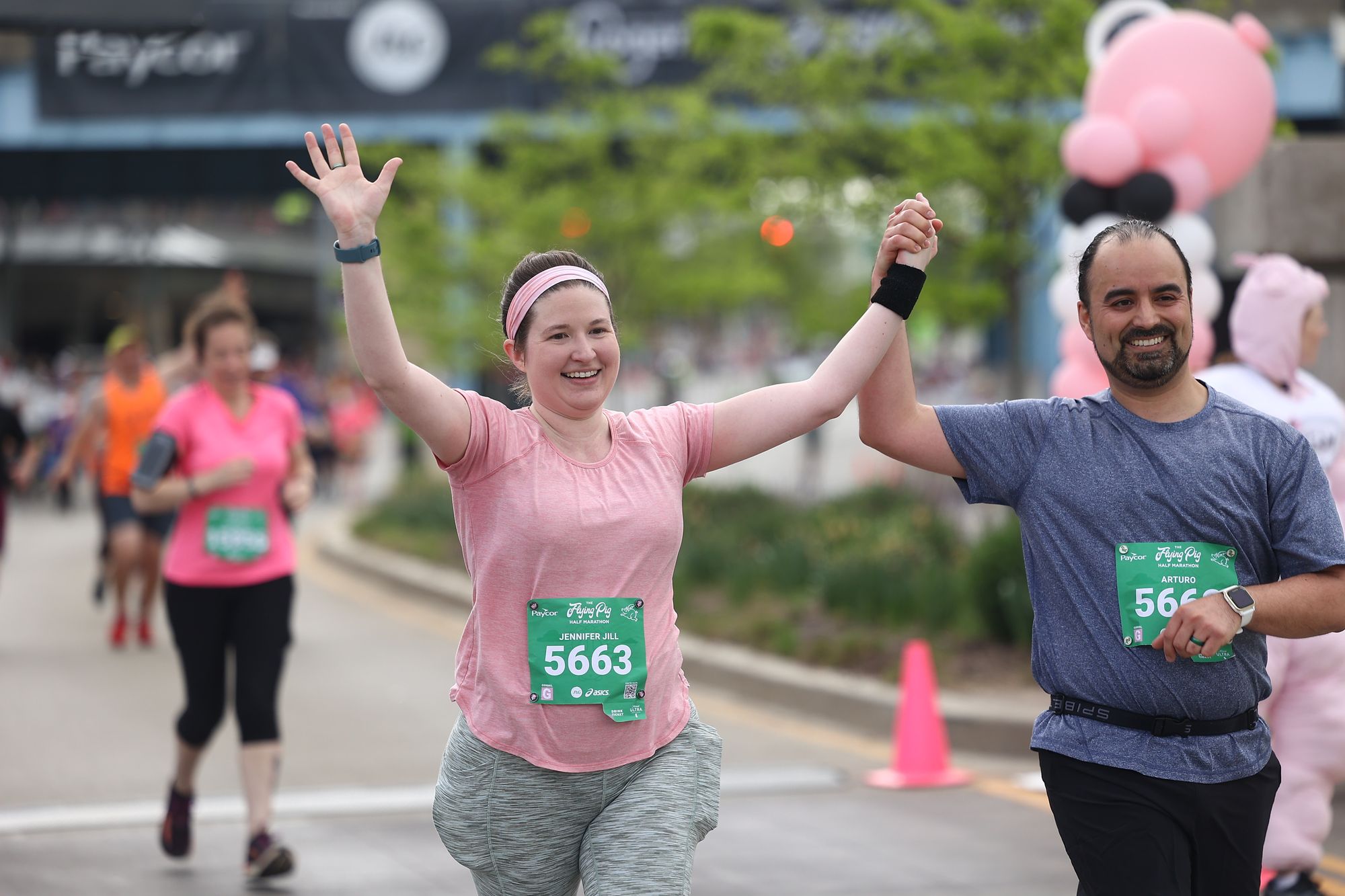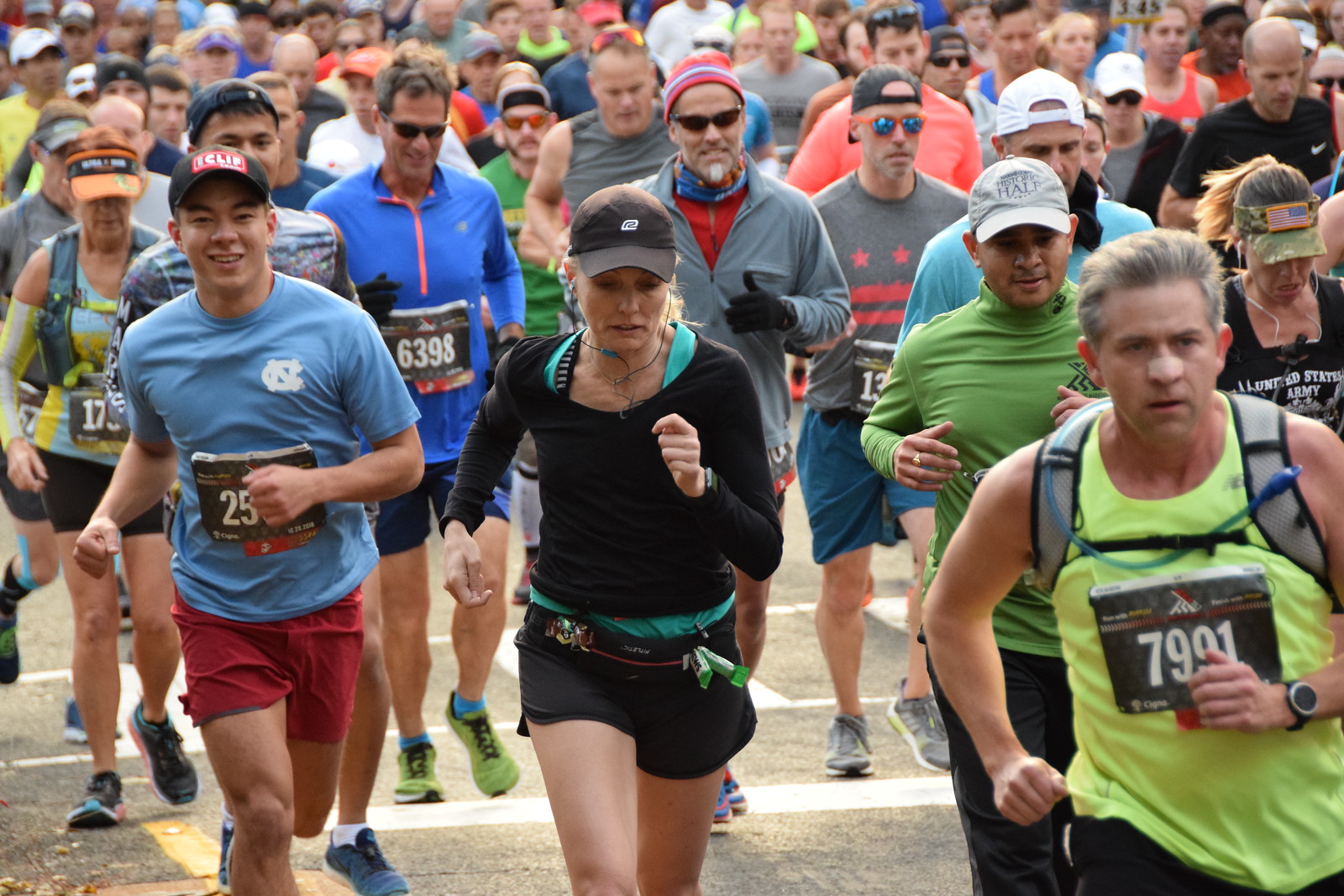Home>Misc>Featured>What Is The Best Half Marathon Training Plan


Featured
What Is The Best Half Marathon Training Plan
Modified: March 1, 2024
Discover the best half marathon training plan and get featured as a top performer. Achieve your fitness goals with expert guidance and reach new heights in your running journey.
Introduction
A half marathon is an exciting and challenging race that requires proper training to achieve your goals. Whether you’re a beginner runner or an experienced athlete, having a well-structured training plan is essential to help you build endurance, prevent injuries, and improve your overall performance. In this article, we’ll explore the importance of a half marathon training plan, factors to consider before choosing one, and popular training plans available.
Having a half marathon training plan provides structure and guidance to your training journey. It helps you gradually increase your mileage, improve your running form, and establish a consistent routine. With a plan in place, you can set realistic goals and measure your progress along the way. The right training plan will also consider other important factors such as rest days, cross-training activities, and recovery periods to ensure your body stays strong and injury-free.
Before choosing a half marathon training plan, it’s important to evaluate your current fitness level, running experience, and availability for training. Consider factors such as your schedule, any pre-existing injuries or health conditions, and your personal goals. Keep in mind that not all training plans are suitable for everyone. What works for one person may not work for another.
There are several popular half marathon training plans that have been proven effective by countless runners. Let’s take a closer look at some of them:
1. Hal Higdon’s Half Marathon Training Program: This plan offers different variations for beginners, intermediate runners, and advanced athletes. It follows a progressive approach, gradually increasing mileage and incorporating cross-training activities.
2. Jeff Galloway’s Half Marathon Training Program: Galloway’s method includes a combination of running and walking to help runners gradually build endurance without risking overuse injuries. It’s a popular choice for first-time half marathoners.
3. Nike Run Club Half Marathon Training Plan: Created by Nike’s team of experts, this plan provides a variety of training options, including speed workouts, long runs, and recovery days. It is suitable for runners of all levels.
4. Hansons Half Marathon Method: This plan focuses on cumulative fatigue, which means running on tired legs to simulate race-day conditions. It incorporates tempo runs, speed workouts, and long runs to improve endurance and running economy.
5. Beginner’s Half Marathon Training Plan: Designed specifically for beginners, this plan starts with shorter intervals of running and walking, gradually increasing running time. It provides a gentle introduction to half marathon training.
When following a half marathon training plan, there are a few tips for success. It’s important to listen to your body and adjust the plan as needed. Incorporate cross-training activities such as strength training and yoga to improve overall fitness and prevent muscle imbalances. Stay consistent with your training, but also prioritize rest and recovery to avoid overtraining and burnout. Finally, remember to enjoy the process and celebrate your achievements along the way.
Importance of a Half Marathon Training Plan
A half marathon is a significant distance that requires proper preparation and training to ensure a successful and enjoyable race day. This is where the importance of a half marathon training plan comes into play. Let’s explore why having a training plan is crucial for your half marathon journey.
1. Structure and Progression: A training plan provides a structured approach to your training, outlining the mileage, workouts, and rest days needed to build up your endurance. It ensures that you are gradually increasing your mileage and intensity, allowing your body to adapt to the demands of running a half marathon. Without a plan, it’s easy to fall into the trap of inconsistent training or overtraining, both of which can increase the risk of injury and hinder your progress.
2. Injury Prevention: Training for a half marathon puts a significant amount of stress on your body, and without a proper plan, you may be more prone to injuries. A well-designed training plan will incorporate rest days, recovery runs, and cross-training activities to allow your body to recover and prevent overuse injuries. Additionally, it will gradually increase your mileage, giving your muscles, tendons, and ligaments time to adapt and become stronger, reducing the risk of strains or sprains.
3. Accountability and Motivation: Following a training plan holds you accountable for your workouts. It sets clear goals and targets for each week, making it easier to stay motivated and track your progress. A training plan helps you stay focused and committed, especially during those times when you may feel less motivated to train. It provides structure and a sense of accomplishment as you check off each workout, keeping you motivated and determined to reach your goal.
4. Performance Improvement: A well-structured training plan includes a variety of workouts aimed at improving various aspects of your running performance. It may include long runs to build endurance, speed workouts to enhance your pace, tempo runs to improve lactate threshold, and hill repeats to strengthen your leg muscles. The combination of these workouts helps you become a stronger, faster, and more efficient runner, ultimately leading to improved race performance.
5. Mental Preparation: Running a half marathon requires mental strength and resilience. A training plan helps you develop mental toughness by gradually pushing your limits and helping you overcome challenges during training. It builds your confidence as you successfully complete each workout, increasing your belief in your ability to conquer the race. A well-prepared mind is just as crucial as physical conditioning when it comes to tackling a half marathon.
Overall, having a half marathon training plan is essential to ensure a successful and enjoyable race day. It provides structure, helps prevent injuries, keeps you accountable and motivated, improves your performance, and prepares you mentally for the challenge ahead. So lace up your running shoes and start following a training plan tailored to your goals and abilities. With dedication and consistent training, you’ll be crossing that half marathon finish line with a sense of accomplishment and pride.
Factors to Consider before Choosing a Training Plan
Choosing the right half marathon training plan is a critical decision that can greatly impact your training experience and race day performance. With numerous training plans available, it’s important to consider the following factors before making your choice:
1. Fitness Level: Assess your current fitness level honestly. Are you a beginner runner or an experienced athlete? Different training plans are designed to accommodate runners at various fitness levels. Choosing a plan that aligns with your current fitness level will ensure that the workouts are challenging but still achievable, helping you progress safely and avoid burnout or injury.
2. Running Experience: Consider your running experience and the amount of time you’ve been consistently running. If you’re new to running, you may benefit from a beginner-friendly training plan that incorporates more walk breaks or gradual mileage increases. Experienced runners, on the other hand, may be ready for an intermediate or advanced plan that includes higher mileage and more challenging workouts.
3. Time Availability: Be realistic about the time you can commit to training. Look for a training plan that fits well with your schedule and takes into account your other commitments, such as work, family, and social activities. Choosing a plan that allows for flexibility and customization can help ensure that you can consistently complete your workouts without feeling overwhelmed.
4. Goals and Objectives: Determine your goals for the half marathon. Are you aiming for a specific finish time or simply looking to complete the race? Different training plans may emphasize different aspects, such as speed, endurance, or consistency. Understanding your goals will help you choose a plan that aligns with what you want to achieve.
5. Injury History and Health Conditions: Take into consideration any previous injuries or health conditions. If you’ve had past injuries or are prone to certain conditions, such as knee pain or shin splints, it’s crucial to choose a training plan that includes proper rest and recovery days. Some plans may also incorporate strength training or cross-training activities to help prevent injury and promote overall fitness.
6. Training Philosophy: Consider the training philosophy of the plan. Some plans may emphasize high mileage, while others may focus on a combination of running and walking intervals. Research different training methods and find one that resonates with your preferences and running style. It’s important to choose a plan that aligns with your beliefs and feels enjoyable for you.
7. Personalization: Look for plans that offer at least some degree of customization. Each runner is unique, and a one-size-fits-all approach may not suit everyone. Having the ability to tailor the plan to your individual needs, such as adjusting mileage or workouts, can make your training experience more effective and enjoyable.
By considering these factors carefully, you can choose a half marathon training plan that is well-suited to your needs and will set you up for success on race day. Remember, the ultimate goal is to find a plan that is challenging, enjoyable, and allows you to progress at a pace that is both safe and sustainable.
Popular Half Marathon Training Plans
When it comes to preparing for a half marathon, there are several widely recognized training plans that have been proven to deliver results. These plans offer different approaches, intensities, and durations to cater to a range of runners. Let’s explore some of the popular half marathon training plans:
1. Hal Higdon’s Half Marathon Training Program: Hal Higdon’s training programs are widely respected and offer plans for runners of all experience levels. His plans consist of several variations, including Novice (for first-time half marathoners), Intermediate, and Advanced. They typically span 12 to 18 weeks and incorporate a gradual increase of weekly mileage, interval training, and long runs to build endurance.
2. Jeff Galloway’s Half Marathon Training Program: Jeff Galloway’s method is popular among beginners and those aiming to finish their first half marathon while minimizing the risk of injury. His plans involve a run-walk approach, where running intervals are followed by walking intervals. This method helps runners gradually build endurance and reduce the impact on their joints and muscles.
3. Nike Run Club Half Marathon Training Plan: Nike Run Club offers a variety of training plans through their mobile app. Their plans cater to runners of all levels, from beginners to experienced athletes. Nike Run Club plans include a mix of interval training, long runs, and recovery days. The app provides audio-guided runs, personalized coaching, and detailed progress tracking to keep you motivated and accountable.
4. Hansons Half Marathon Method: The Hansons Half Marathon Method focuses on cumulative fatigue to simulate race-day conditions. Their approach involves higher weekly mileage compared to other plans, with an emphasis on consistency and running on tired legs. This method aims to improve a runner’s endurance and running economy through tempo runs, speed workouts, and long runs with a “just right” intensity.
5. Beginner’s Half Marathon Training Plan: This type of plan is specifically designed for novice runners who are new to the half marathon distance. The plan typically includes a combination of running and walking intervals to gradually build endurance and increase running time. It may also incorporate strength training and cross-training activities to improve overall fitness.
It’s important to note that these are just a few popular half marathon training plans, and there are many other options out there. Ultimately, the best plan for you will depend on factors such as your fitness level, running experience, goals, and personal preferences. It’s advisable to explore different plans, understand their principles, and consider seeking guidance from a running coach or experienced runner to help you choose a plan that suits your individual needs.
Hal Higdon’s Half Marathon Training Program
Hal Higdon is a renowned running coach and author who has developed comprehensive training programs for various distances, including the half marathon. Hal Higdon’s Half Marathon Training Program offers plans for runners of all levels, from beginners to experienced athletes. Let’s take a closer look at the key features of this popular training program.
The program provides different training plans based on your running experience and goals. It includes a Novice plan for first-time half marathoners, an Intermediate plan for runners looking to improve their performance, and an Advanced plan for more experienced athletes aiming for faster race times. Each plan typically spans 12 to 18 weeks, gradually building up your endurance and preparing you for the race.
Hal Higdon’s training program follows a systematic approach, incorporating a variety of workouts to enhance different aspects of your running. The plans include a mix of easy runs, interval training, tempo runs, and progressively longer long runs to build both endurance and speed. The mileage increases gradually throughout the program, allowing your body to adapt and minimizing the risk of injury.
Rest days are also an integral part of Hal Higdon’s training program. The plans incorporate scheduled rest days to allow your body to recover and prevent overtraining. Cross-training activities such as swimming, cycling, or strength training are also included to improve overall fitness and prevent muscle imbalances.
One of the strengths of Hal Higdon’s training program is its flexibility. While the program provides a structured plan, it also acknowledges that life can sometimes interfere with training. It encourages runners to prioritize and adjust their workouts as needed, ensuring that they can fit training into their everyday routines. This flexibility makes the program adaptable to individual schedules and preferences.
Hal Higdon’s training program also emphasizes the importance of proper nutrition and hydration for optimal performance. It provides guidance on fueling your body before, during, and after workouts to support your training and promote recovery.
Whether you’re a beginner or an experienced runner, Hal Higdon’s Half Marathon Training Program can help you reach your goals. By following the plan, gradually building your mileage, and incorporating a variety of workouts, you can improve your endurance, speed, and overall performance on race day. It is important to remember to listen to your body, make adjustments if needed, and seek guidance from a professional if you have any concerns or questions along the way.
Jeff Galloway’s Half Marathon Training Program
Jeff Galloway is a former Olympian and renowned running coach who has developed a unique training program for half marathons. Jeff Galloway’s Half Marathon Training Program is particularly popular among beginner runners and those looking for a run-walk approach to training. Let’s explore the key features of this effective and inclusive training program.
Jeff Galloway’s training program incorporates a run-walk method, where runners alternate between running and walking intervals during their workouts. This approach aims to reduce the risk of injury and help runners gradually build endurance and complete the half marathon distance successfully. By incorporating walk breaks, this program allows runners to recover and conserve energy, making it more attainable for individuals who may be new to running or have limited experience.
The training program provides various plan options depending on your goals and fitness level. These plans typically span 15 to 20 weeks and gradually increase the running time while maintaining a consistent rhythm of walk breaks. The program offers flexibility to adjust the duration of run and walk intervals based on your fitness level and preference.
One of the benefits of Jeff Galloway’s training program is that it prioritizes injury prevention. By incorporating walk breaks, it minimizes the stress on joints and muscles, reducing the risk of overuse injuries. This approach allows the body to adapt gradually to the distance and reduces the chances of burnout or exhaustion.
Jeff Galloway’s program also promotes rest and recovery as an essential part of training. The plans include scheduled rest days to ensure runners have adequate time to recover and prevent fatigue. This focus on rest helps maintain a healthy balance between training and rest, reducing the risk of overtraining and enhancing overall performance.
In addition to the run-walk intervals, Jeff Galloway’s training program emphasizes the importance of other aspects of training, such as cross-training and strength exercises. By incorporating cross-training activities like swimming or cycling and strength exercises, runners can improve their overall fitness, prevent muscular imbalances, and enhance their running performance.
One of the unique aspects of Jeff Galloway’s Half Marathon Training Program is its inclusivity. It can accommodate runners of all fitness levels and ages, allowing individuals to participate in half marathons regardless of their running background. This approach promotes a positive and inclusive running community, encouraging individuals to pursue their goals at their own pace.
Whether you’re new to running or aiming to complete your first half marathon with reduced stress and increased enjoyment, Jeff Galloway’s Half Marathon Training Program offers a supportive and effective approach. By incorporating run-walk intervals, prioritizing rest and recovery, and promoting inclusivity, this program can help you reach your half marathon goal, while also fostering a positive and sustainable running experience.
Nike Run Club Half Marathon Training Plan
The Nike Run Club Half Marathon Training Plan is a comprehensive and versatile program designed to cater to runners of all levels. Created by Nike’s team of experts, this training plan offers a range of options and features that can help you prepare for a half marathon.
The Nike Run Club Half Marathon Training Plan provides a variety of training options to suit individual preferences and goals. Whether you’re a beginner, intermediate, or advanced runner, you can find a plan that aligns with your fitness level. The plans typically span 12 to 16 weeks and vary in intensity, allowing for customization based on your needs.
One of the key features of the Nike Run Club Half Marathon Training Plan is its accessibility. The program is available through the Nike Run Club mobile app, which offers a user-friendly interface and a wealth of resources. The app provides audio-guided runs, personalized coaching, and detailed progress tracking, making it easier to follow the training plan and monitor your performance.
The Nike Run Club training plan incorporates a variety of workouts to build endurance, improve speed, and enhance running economy. These include long runs, tempo runs, speed workouts, recovery runs, and cross-training activities. The combination of these different workouts helps you develop the necessary physical and mental abilities for a successful half marathon race.
Another notable aspect of the Nike Run Club Half Marathon Training Plan is its emphasis on community and motivation. The app allows you to connect with a global community of runners, providing support, encouragement, and accountability. You can participate in challenges, join virtual races, and share your progress with others, creating a sense of camaraderie even if you’re training on your own.
The Nike Run Club training plan also recognizes the importance of recovery and proper nutrition. It includes guidance on post-workout recovery strategies and offers insights into fueling your body before, during, and after workouts. A well-rounded approach to training and recovery is crucial for optimal performance and reducing the risk of injury.
Whether you prefer running alone or thrive on the support of a community, the Nike Run Club Half Marathon Training Plan offers a comprehensive and flexible approach to preparing for a half marathon. With its range of training options, personalized coaching, and interactive features, this plan can help you stay motivated, track your progress, and ultimately achieve your goals.
Hansons Half Marathon Method
The Hansons Half Marathon Method is a training program developed by Keith and Kevin Hanson, renowned running coaches and authors. This method follows a unique approach known as cumulative fatigue, which aims to prepare runners for the physical and mental demands of race day. Let’s delve into the key features of the Hansons Half Marathon Method.
The Hansons Half Marathon Method is designed to optimize your training by simulating the fatigue you will experience during the actual half marathon. Unlike traditional training plans that emphasize long runs, the Hansons method focuses on gradually increasing your weekly mileage, ensuring that each run is challenging and helps build endurance.
The core principles of the Hansons Half Marathon Method include consistency, balance, and specificity. The training program includes a combination of easy runs, tempo runs at your goal race pace, speed workouts, and long runs. These different types of workouts help improve speed, endurance, lactate threshold, and running economy.
One notable feature of the Hansons Half Marathon Method is the absence of extremely long runs. The longest run in the training plan typically does not exceed 16 miles, unlike other programs that include runs closer to the full half marathon distance. This approach may initially seem counterintuitive, but it is based on the concept of cumulative fatigue. By running on slightly tired legs consistently, you gradually condition your body and mind to handle the fatigue you may experience on race day.
An important aspect of the Hansons Half Marathon Method is its focus on proper recovery and balance. The program includes rest days and easy runs to allow your body to recover from the challenging workouts. Additionally, cross-training activities such as cycling or swimming are encouraged to promote overall fitness and prevent overuse injuries.
The Hansons Half Marathon Method also recognizes the significance of nutrition and hydration. Proper fueling and hydration strategies are an integral part of the program to support your training and optimize race day performance. The training plan provides guidance on pre-run fueling, during-run nutrition, and post-run recovery, ensuring that you are adequately nourished for your training runs and on race day.
While the Hansons Half Marathon Method may not be suitable for everyone, particularly beginners or those with a history of injuries, it offers a unique and effective approach to half marathon training. By following this method, you can gradually build your mileage, improve your endurance, and develop the necessary mental resilience to conquer the half marathon distance.
If you are an experienced runner looking to optimize your performance, the Hansons Half Marathon Method may be a great fit. However, it’s always advisable to consult with a running coach or experienced runner before diving into this training program to ensure that it aligns with your goals, abilities, and injury history.
Beginner’s Half Marathon Training Plan
For those new to running or considering their first half marathon, a beginner’s training plan is essential to build endurance, establish a strong foundation, and prepare both the body and mind for this new challenge. Let’s explore the key components and benefits of a beginner’s half marathon training plan.
A beginner’s training plan is designed specifically for individuals who are new to running or have limited running experience. It provides a gradual and structured approach to training, ensuring that the body adapts and progresses safely. The plan typically lasts between 12 to 16 weeks, allowing ample time to build up fitness and mileage.
One of the primary focuses of a beginner’s half marathon training plan is to gradually increase running time while incorporating walk breaks. This run-walk approach helps to prevent overexertion and minimize the risk of injury, allowing beginners to build endurance gradually. As fitness improves, the run intervals become longer, while the walk breaks decrease, eventually leading to continuous running.
The training plan includes a mix of workouts to improve different aspects of running. It incorporates easy runs to build a base level of fitness and aerobic capacity. Interval training is also included to improve speed and endurance, alternating between faster-paced runs and recovery periods.
Long runs are an essential component of a beginner’s training plan. These runs gradually increase in distance, preparing the body and mind for the longer mileage of the half marathon. The program encourages runners to focus on covering the distance rather than worrying about pace, allowing beginners to build confidence and mental resilience.
Strength training and cross-training activities, such as cycling or swimming, are often recommended to complement the running workouts. These exercises help to improve overall fitness, strengthen muscles, prevent imbalances, and reduce the risk of injury. Incorporating strength and cross-training can also provide variety to the training routine and help keep motivation high.
Rest and recovery are essential elements of a beginner’s half marathon training plan. Rest days allow the body to repair and rebuild, minimizing the risk of overtraining and fatigue. Recovery runs at an easy pace provide active recovery and help flush out any metabolic waste accumulated from harder workouts.
One of the most significant benefits of a beginner’s half marathon training plan is the transformation it offers. By following the plan consistently and gradually increasing mileage, beginners can witness impressive progress and improvements in their overall fitness level. It provides a structured path to gradually achieve the goal of completing a half marathon.
Remember, the journey to a half marathon is as much mental as it is physical. A supportive and encouraging mindset is key for beginners. Patience, determination, and celebrating small victories along the way are crucial for maintaining motivation and enjoying the progression.
Overall, a beginner’s half marathon training plan provides a structured, safe, and progressive approach for individuals new to running. It allows beginners to build endurance, establish a strong foundation, and work towards completing their first half marathon with confidence and enjoyment.
Tips for Successful Half Marathon Training
Training for a half marathon requires dedication, discipline, and careful preparation. To ensure a successful training journey and a strong race day performance, consider the following tips:
1. Set Realistic Goals: Start by setting realistic and achievable goals for your half marathon. Whether it’s completing the race, improving your personal best, or aiming for a specific time, having clear goals will help guide your training and keep you motivated.
2. Follow a Training Plan: Choose a well-structured and reputable half marathon training plan that suits your fitness level and goals. A training plan provides the necessary structure, progression, and variety to prevent overtraining and ensure optimal performance on race day.
3. Prioritize Consistency: Consistency is key in half marathon training. Aim to complete your scheduled runs and workouts consistently, even on days when motivation is low. Regular training builds physical fitness, mental resilience, and prepares your body for the demands of the race.
4. Gradually Increase Mileage: Gradually increase your weekly mileage to prevent injuries and allow your body to adapt. Aim for a weekly increase of no more than 10% to prevent overuse injuries and give your muscles, tendons, and ligaments time to strengthen.
5. Mix Up Your Workouts: Incorporate a variety of workouts into your training plan, including long runs, interval training, tempo runs, and cross-training activities. This variety helps improve different aspects of your running, builds strength, and keeps your training interesting and engaging.
6. Listen to Your Body: Pay attention to your body’s signals and adjust your training when needed. Pushing through pain or illness can worsen injuries and hinder progress. Take rest days when necessary, and don’t hesitate to seek medical advice if you experience persistent discomfort or unusual symptoms.
7. Fuel Properly: Proper nutrition is essential for optimal training and performance. Eat a balanced diet that includes a variety of nutrients to fuel your workouts and aid in recovery. Hydrate adequately before, during, and after your runs to prevent dehydration.
8. Incorporate Strength Training: Include strength training exercises in your training regimen to build overall body strength and prevent imbalances. Strengthening your core, leg muscles, and upper body can improve your running form, enhance endurance, and reduce the risk of injuries.
9. Rest and Recover: Allow for proper rest and recovery between workouts. Rest days are essential for your body to repair and adapt to the training stress. Incorporate active recovery techniques such as stretching, foam rolling, or gentle cross-training activities to aid in recovery.
10. Listen to Your Mind: Half marathon training can be mentally challenging. Develop mental resilience by practicing positive self-talk, visualization, and goal setting. Stay motivated by finding a support system, participating in group runs, or joining virtual running communities.
Remember, every runner is unique, and what works for one person may not work for another. Listen to your body and adjust your training as needed. Stay committed, stay positive, and enjoy the process. With proper preparation and determination, you will be ready to embrace the challenge of the half marathon and cross that finish line with a sense of accomplishment and pride.
Conclusion
Training for a half marathon is an exciting and rewarding endeavor that requires careful planning, discipline, and commitment. A well-structured and personalized training plan is crucial for a successful journey towards race day. Consider your fitness level, running experience, goals, and unique circumstances to choose a training plan that suits your needs.
Throughout your training, focus on gradual progression, building endurance, and preventing injuries. Follow the guidance of reputable training programs such as Hal Higdon’s, Jeff Galloway’s, Nike Run Club, Hansons Half Marathon Method, or a beginner’s plan. These programs offer a variety of approaches, whether it’s focusing on mileage, incorporating run-walk intervals, providing personalized coaching, or emphasizing cumulative fatigue.
In addition to following a training plan, implement tips for successful half marathon training. Set realistic goals, maintain consistency, gradually increase mileage, mix up your workouts, listen to your body, fuel properly, incorporate strength training, prioritize rest and recovery, and develop mental resilience. Remember that every runner is unique, so personalize your training to suit your needs and make adjustments as necessary.
Training for a half marathon may have its challenges, but the journey is also filled with excitement, growth, and personal satisfaction. Embrace the process, enjoy the progress, and celebrate small victories along the way. Surround yourself with a supportive community of fellow runners, seek advice when needed, and stay motivated by visualizing your success.
On race day, trust in your training, stay focused, pace yourself, and most importantly, enjoy the experience. Crossing the finish line of a half marathon is an accomplishment to be proud of, regardless of your race time. It represents the culmination of your hard work, commitment, and dedication.
Whether you’re a beginner or an experienced runner, the journey to a half marathon is a remarkable personal achievement. It offers opportunities for growth physically, mentally, and emotionally. Remember to stay determined, be resilient, and embrace the challenge with enthusiasm and joy.









